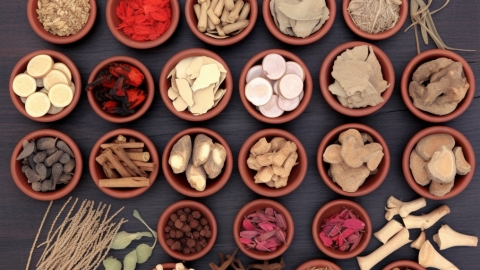What are the traditional Chinese medicine treatments for keloids?
Generally speaking, scars refer to cicatrices. Traditional Chinese Medicine (TCM) offers several treatment methods for keloids, including oral herbal medicine, topical herbal applications, acupuncture, massage therapy, and cupping therapy. A detailed explanation is as follows:

1. Oral Herbal Medicine
Oral herbal medicine regulates internal bodily functions, such as qi and blood circulation and organ function, to promote skin metabolism and inhibit scar hyperplasia. Commonly used herbs include blood-activating and stasis-resolving herbs like peach kernel (Prunus persica), safflower (Carthamus tinctorius), and motherwort (Leonurus japonicus), as well as heat-clearing and detoxifying herbs such as honeysuckle (Lonicera japonica), dandelion (Taraxacum mongolicum), and cassia seed (Semen Cassiae).
2. Topical Herbal Application
Herbal medicines are applied directly onto the skin to promote softening and absorption of scars. Commonly used herbs include anemarrhena (Anemarrhena asphodeloides), root of Chinese violet (Scutellaria isatidea), and dragon's blood (Daemonorops draco). These herbs can be applied externally via poultices or washes on keloid scars, exerting anti-inflammatory, anti-pruritic, and antibacterial effects.
3. Acupuncture Therapy
By stimulating specific acupoints, acupuncture regulates qi and blood circulation, promotes scar repair and local tissue healing, and enhances skin immunity. Commonly used acupoints include Zusanli (ST36), Hegu (LI4), and Xuehai (SP10). Acupuncture can also relieve symptoms such as itching and pain associated with keloids.
4. Massage Therapy
Massaging the tissues surrounding the keloid helps regulate qi and blood flow, improves local circulation, accelerates metabolism, alleviates pain, and facilitates softening and dispersion of scar tissue. Gentle techniques should be used to avoid excessive irritation.
5. Cupping Therapy
Cupping promotes local blood and lymphatic circulation, removes blood stasis and edema, and improves tissue oxygenation, thereby aiding in scar softening and regression.
TCM treatment for keloids should be conducted under the guidance of a qualified TCM practitioner, as treatment methods may vary depending on individual constitution and condition. Additionally, TCM treatment for keloids may require a prolonged period; patients should cooperate patiently with treatment, maintain a positive mindset, and adopt healthy lifestyle habits.








